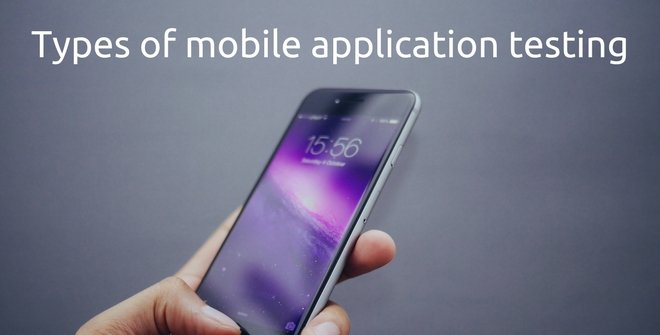Types of mobile application testing

Author : Kannan M 14th Feb 2018
In our previous instalment, we have discussed in detail about various things to consider for mobile app testing and its benefits. Let us now look at all the different types of mobile app testing.
Functional testing
Use cases will be developed according to the requirement specification and the tests will be carried out. The objective here is to ensure that the mobile application is working as per the requirements mentioned.
Laboratory testing
This is carried out by network operators to test whether there are any anomalies when the mobile application makes use of network data or voice. A wireless network will be simulated and the mobile application performance will be tested.
Performance testing
Performance of the mobile application is tested under all possible scenarios. Various real-life scenarios are simulated like low or no network, low battery, low memory, server not reachable, etc. The mobile application’s behaviour should not be affected by all these circumstances. Performance degradation can happen either on the client end or server end. Performance testing has to ensure all these scenarios are tested and the application’s performance is not affected.
Memory leakage testing
Memory leakage is a serious flaw which can lead to application crashing. This is even more significant for a mobile application since it has a relatively lower memory to work with. Memory leakage happens when the application is unable to work effectively within the allocated memory limits. When there is a memory leak, the application slows and the performance is widely affected.
Interrupt testing
A mobile application will be interrupted by many actions like an incoming call, low battery, etc. Interrupt testing has to simulate all the possible interrupts and see how the application reacts to each one. Some of the possible interrupts are
- Incoming calls and SMS
- Low battery warning
- Power cable plugged in
- No network availability
- Device gets switched off
- GPS signal lost
Usability testing
Usability testing is carried out to ensure that the mobile application is behaving in the way it is expected to and the users are able to carry out their actions seamlessly. The role of UX is extremely significant in user retention. The UI and UX of the app should be intuitive enough so that the users can complete their task with ease. Some of the important aspects of usability testing are
Functionality: The application has to provide the desired functionality without fail in all cases.
Layout and design: The application should follow the best in class UI and the buttons have to be placed in the expected places. For example, if a form has 2 buttons with the labels “submit” and “reset”, as a standard practice submit button should be placed before the reset button.
Interaction: The navigational and user flow has to be in the correct order. For example, the user has to be redirected to the success message screen after filling up the form. If the user is taken to a different screen without any notification, the user will be confused and will be lost.
Installation testing: Mobile application comes either pre-installed on the mobile device or can be downloaded and installed from the store. Installation testing has to ensure that the process of installation, uninstallation, and update are working smoothly without generating any errors across devices.
Load testing: Most of the mobile devices depend on the network carriers for their connectivity. Load testing has to ensure that the mobile application should perform consistently across devices and across networks. If the mobile application is simultaneously accessed by multiple users then it will extract load on the server, such loads have to be simulated and tested for performance.
Interface testing: The UI of the mobile application thoroughly tested in the interface testing phase. All the elements are validated like buttons, labels, input, etc. Each and every screen in the mobile application is individually tested and validated. Some mobile users may change the orientation of their device to either landscape or portrait mode. Mobile applications by default are designed to work in portrait mode. The test has to be carried out to see how the application reacts when the orientation is changed.


